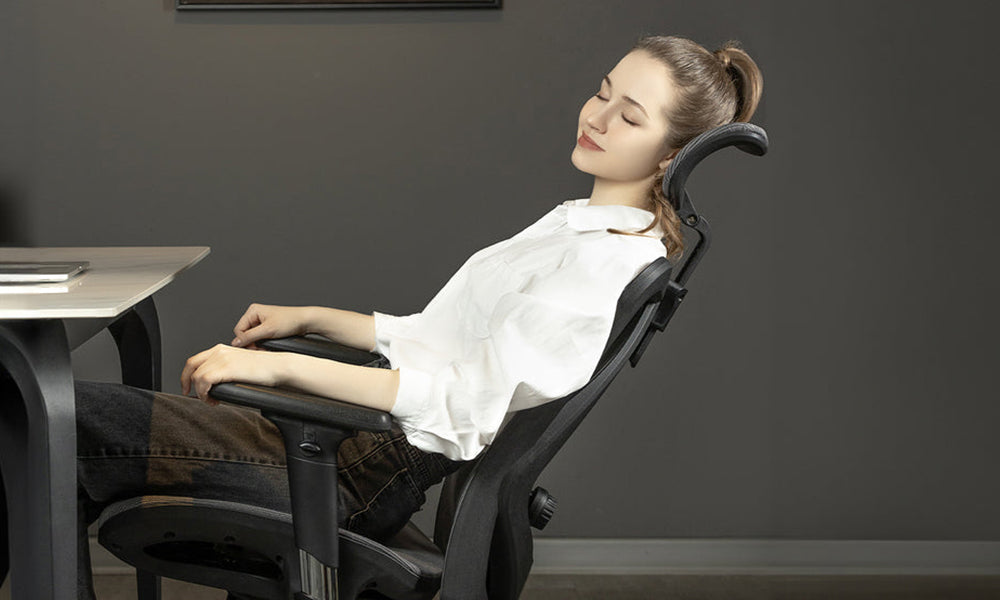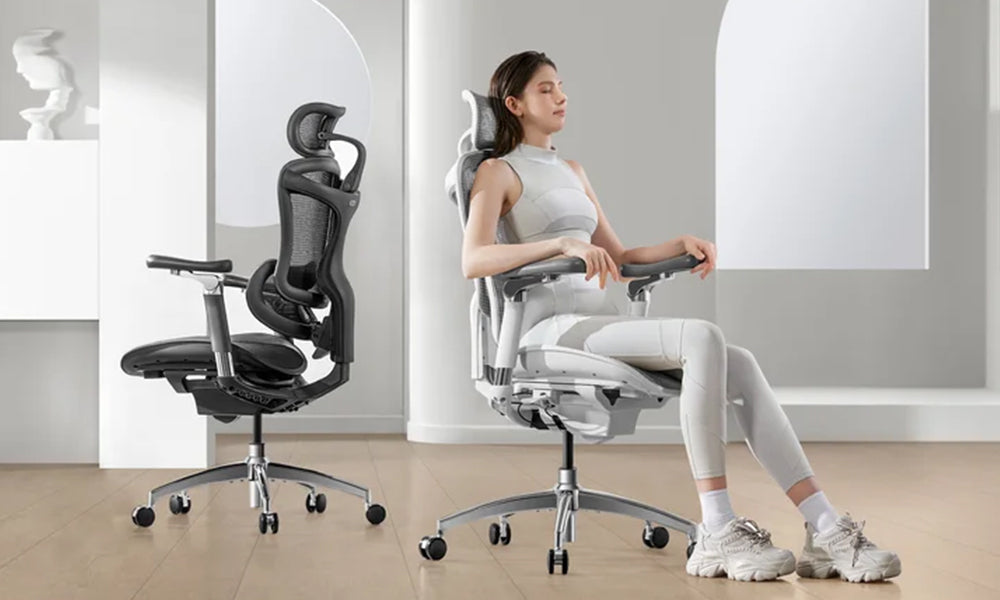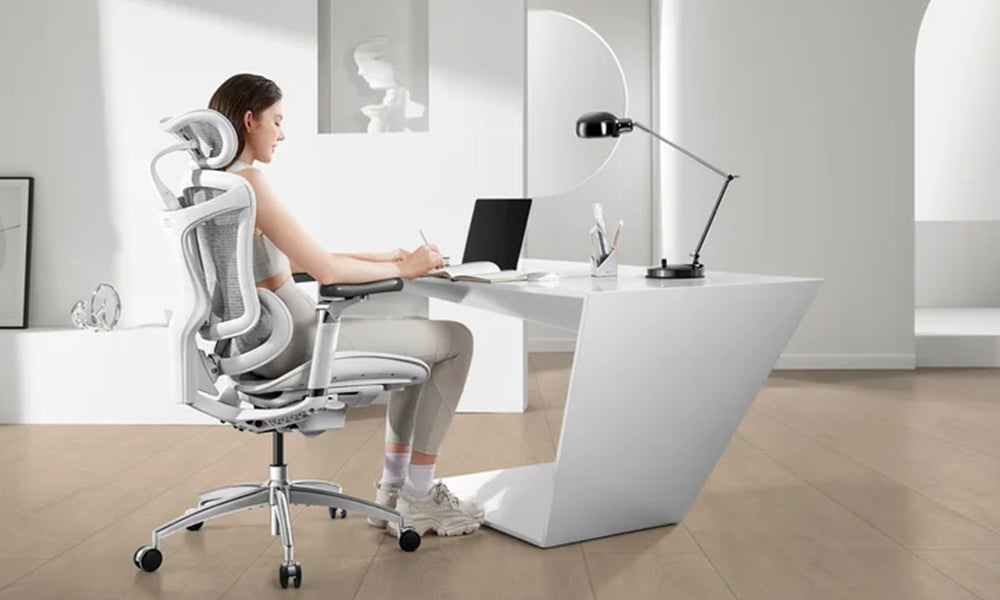In the modern era, many of us spend a significant portion of our lives sitting in office chairs. Whether you're working from home, a traditional office, or a co-working space, the comfort of your office chair can greatly impact your productivity and overall well-being. A comfortable office chair not only supports your body but also enhances your focus and creativity. In this comprehensive guide, we will explore various ways to make your office chair more comfortable, ensuring that you can work efficiently and comfortably for hours on end.
Choose the Right Office Chair
The journey to a more comfortable office chair starts with selecting the right one in the first place. Here are some factors to consider when choosing an office chair:
a. Ergonomics: Look for chairs that are designed with ergonomics in mind. These chairs are built to support your body's natural posture and movements, reducing strain and discomfort.
b. Adjustable Features: Opt for chairs with adjustable features like seat height, armrests, and lumbar support. These adjustments allow you to customize the chair to your body's needs.
c. Material and Padding: Consider the materials used in the chair, as well as the padding. High-quality materials and ample padding can make a significant difference in comfort.
d. Wheelbase and Swivel: Ensure that the chair has a stable wheelbase and the ability to swivel easily. This will allow you to move around your workspace effortlessly.
Invest in a Quality Cushion
Even the best office chairs may lack sufficient padding or cushioning. If you find your chair's seat uncomfortable, consider investing in a high-quality cushion. There are various types of cushions available, including memory foam, gel, and orthopedic cushions. Choose one that suits your needs and provides the necessary support for your lower back and buttocks.
Use Lumbar Support
Lumbar support is essential for maintaining the natural curve of your spine while sitting for extended periods. Many office chairs come with built-in lumbar support, but if yours doesn't, you can easily add an aftermarket lumbar cushion. Position the cushion at the small of your back to alleviate lower back pain and improve overall comfort.
Adjust Your Chair Properly
Even the most ergonomic office chair won't provide comfort if it's not adjusted correctly. Follow these steps to ensure your chair is set up properly:
a. Seat Height: Adjust the chair's height so that your feet are flat on the floor, and your knees are at a 90-degree angle. This promotes better circulation and reduces leg discomfort.
b. Armrests: Set the armrests to a height that allows your arms to rest comfortably while typing or using your mouse. If the armrests are not adjustable, consider using a cushion or pillow to achieve the desired height.
c. Backrest Tilt: Most office chairs have a recline or tilt function. Adjust the backrest tilt to a position that supports the natural curve of your spine. Avoid reclining too far back, as this can strain your neck and shoulders.
d. Headrest (if available): If your chair has a headrest, adjust it to support your head and neck comfortably, reducing strain during long hours of work.
Maintain Good Posture
No matter how comfortable your office chair is, poor posture can still lead to discomfort and pain. Here are some tips for maintaining good posture while sitting:
a. Sit back in the chair with your back against the backrest.
b. Keep your feet flat on the floor or use a footrest if needed.
c. Maintain a slight gap between your knees and the edge of the seat.
d. Keep your computer monitor at eye level to prevent straining your neck.
e. Take regular breaks to stand up, stretch, and walk around to avoid prolonged periods of sitting.
Use an Adjustable Footrest
If your chair's height adjustment doesn't allow your feet to rest comfortably on the floor, consider using an adjustable footrest. A footrest can help reduce pressure on your legs and lower back, making sitting for long hours more comfortable.
Add Armrest Cushions
If your chair's armrests are hard or uncomfortable, consider adding armrest cushions. These soft cushions can provide extra support and prevent discomfort in your arms and elbows.
Invest in an Ergonomic Keyboard and Mouse
The comfort of your office chair is closely linked to your workstation setup. Using an ergonomic keyboard and mouse can help you maintain a more comfortable and natural typing posture. Ergonomic peripherals are designed to reduce strain on your wrists, hands, and arms.
Stay Hydrated and Take Regular Breaks
Hydration is essential for maintaining comfort during long hours of sitting. Drink plenty of water throughout the day to stay hydrated, which can help prevent muscle stiffness and discomfort. Additionally, take short breaks to stand up, stretch, and walk around every hour to keep your muscles engaged and reduce the risk of developing discomfort.
Consider a Sit-Stand Desk
For those looking to take their office comfort to the next level, consider investing in a sit-stand desk. These desks allow you to alternate between sitting and standing while working. Changing positions throughout the day can reduce the risk of developing musculoskeletal issues and improve overall comfort.
Use Proper Lighting
Proper lighting is often overlooked but plays a crucial role in your overall comfort. Ensure that your workspace is well-lit to reduce eye strain and headaches. Position your lighting source so that it illuminates your workspace evenly without causing glare on your computer screen.
Personalize Your Workspace
Personalizing your workspace can also enhance comfort. Consider adding items like plants, artwork, or soft furnishings that make your workspace more inviting and pleasant. A pleasant environment can positively impact your overall well-being and comfort.
Conclusion
Your office chair is a crucial piece of furniture that can significantly impact your daily comfort and productivity. By choosing the right chair, making necessary adjustments, and incorporating ergonomic accessories, you can transform your workspace into a comfortable and supportive environment. Remember to prioritize good posture, take regular breaks, and personalize your workspace to create a truly comfortable and inviting office space. With these tips and adjustments, you'll be well on your way to making your office chair more comfortable and conducive to a productive workday.



